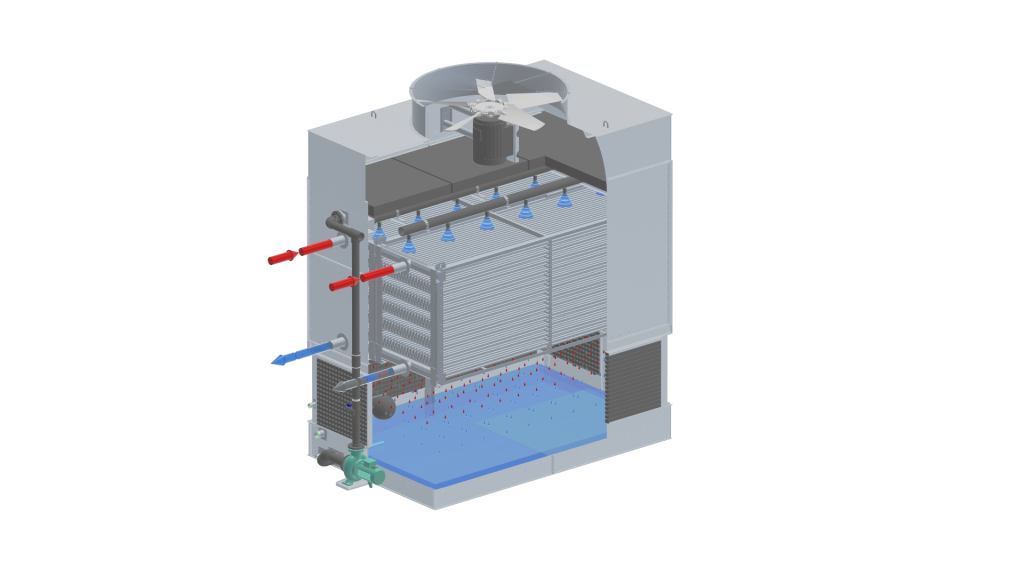In the world of cooling technology, two remarkable devices stand out: the Evaporative Condenser and the Evaporative Cooler. While both harness the magic of evaporative cooling, they serve distinct purposes. Let’s dive into the key disparities between these two marvels of engineering.
Evaporative Condenser Unveiled
Function: Embracing the realm of refrigeration and air conditioning, the Evaporative Condenser takes the stage. Its mission is crystal clear – to dissipate heat from the system by ushering in a refreshing coolness.
Components: At its core, it boasts coils or tubes, a channel through which sizzling refrigerant gas flows. Enveloping these coils is a splendid water spray system. As the fiery gas dances through the coils, a gentle rain of water descends upon them. This aqueous embrace fosters an enchanting heat transfer, coaxing the refrigerant to condense, a pivotal step in the realm of cooling.
Heat Exchange: Here’s the captivating part – the heat exchange, where the refrigerant transitions from its gaseous form to a tranquil liquid state. This metamorphosis is the lifeblood of air conditioning and refrigeration.
Applications: Evaporative Condensers flourish in the realm of commerce and industry. You’ll find them majestically installed in vast refrigeration units and HVAC systems, diligently ensuring optimum cooling.

Closed Circuit Cooler
Embracing the Closed-Circuit Cooling Towers
Function: In a different corner of the cooling universe, we have the closed circuit Evaporative Cooler. Its mission? To embrace the air with moisture and bestow a refreshing coolness. It’s all about making the environment chillier.
Components: The ensemble includes a fan, a water reservoir, a water distribution system, and cooling pads. The fan, the hero of the tale, beckons warm air to traverse water-saturated pads or filters. As the air journeys through this aqueous wonderland, it undergoes a delightful transformation – it sheds heat through evaporation, emerging on the other side as cooler air, ready to invigorate your living or working space.
Heat Exchange: Here’s where the magic happens – the heat exchange in an Closed Circuit Evaporative Cooler doesn’t involve any fancy phase changes of refrigerants. Instead, it relies on the simple yet effective process of water evaporation to whisk away the heat, leaving behind a trail of coolness.
Applications: The Closed Circuit Cooling tower shines in dry, arid climates where staying cool is a formidable challenge. It finds its calling in homes, offices, and other cozy nooks, providing a budget-friendly and eco-conscious alternative for staying comfortable. However, it’s a no-go in humidity-sensitive settings.
Conclusions
The crux of the matter boils down to their primary functions and applications. An Evaporative Condenser plays a pivotal role in the world of cooling systems, orchestrating the transformation of refrigerants. On the other hand, the Closed Circuit Cooling towers, is all about indulging your space with the cooling caress of water evaporation. Two devices, two missions, one goal – keeping you cool and comfortable.







